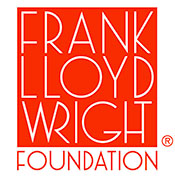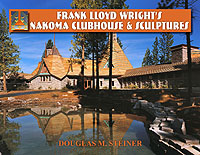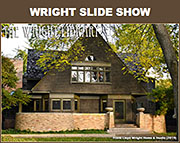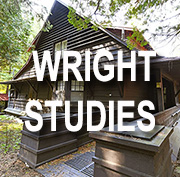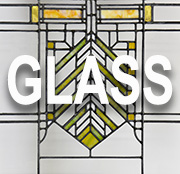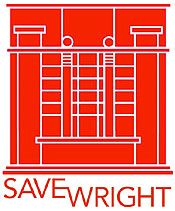|
|
|
|
1898
 |
Luxfer Prism Glass Tiles 1897. Four Luxfer
Prism Glass Tiles. The concept was simple, refraction of light to the back
of room. Electrical lights were in their infancy. Thomas Edison did not even
invented the incandescent electric light until 1879. Luxfer Prism Company
was not incorporated until 1897. The first date imprinted on this tile is
October 4, 1881. In 1881, James G. Pennycuick, secured a patent for
illuminating tiles to be used in vault-lights in Boston Massachusetts,
Patent No. 247,996, dated October 4, 1881. In October, 1896, John M. Ewen
Henry M. Bacon, Thomas W. Horn, and James Pennycuick founded the Radiating
Light Company in Chicago. Two months later they changed the name to
Semi-prism Glass Company and finally, in March 1897, to Luxfer Prism
Company. Text imprinted in glass: "Luxfer. Patented. October 4, 1881. August
12, 1884. Feb 17, 1885. May 5, 1885. August 11, 1885. Jan 29, 1889.
Feb 21, 1893. June 2, 1896. October 6, 1896. Jan 5, 1897. March 23,
1897. March 30, 1897. March 6, 1897. April 13, 1897. April 27, 1897. June 1,
1897. July 13, 1897. On December 7, 1897, Frank Lloyd Wright was issued a
total of 41 patents, all but one was for the design on the face of the glass
tile. It appears that only one design, his first, was ever produced...
Continued...
|
0026.10.0721 |
1898
 |
Frank Lloyd Wright
Designed Luxfer Prism, Large "V" (Purple Tint).
Of the 41 Wright designs for the Luxfer
Prism Company, it appears that only the first (No. 27,977) was produced. The
patent describes it as having "lines of ornamentation produced upon the
prism-light by variations in the surface-levels. These ornamental lines take
the form of circles, arcs of circles, squares, and the like, arranged
concentrically about the center C and interlacing or overlapping each other.
The whole forms a grid-like sort of ornament." It become one of Luxfer's
dominate tile designs. Patent specification: "My invention relates to
designs for prism-lights. The essential features of my design are found in a
prism-light comprising a body with prisms on one side and on the other a
series of concentrically-arranged ornamental lines which interlace or
overlap each other, so as to produce a grid-like appearance." |
1897.01.0399 |
1898
 |
Frank Lloyd Wright
Designed Luxfer Prism, Small "V" (Clear).
Of the 41 Wright designs for the Luxfer
Prism Company, it appears that
only the first (No. 27,977) was
produced. The patent describes
it as having "lines of
ornamentation produced upon the
prism-light by variations in the
surface-levels. These ornamental
lines take the form of circles,
arcs of circles, squares, and
the like, arranged
concentrically about the center
C and interlacing or overlapping
each other. The whole forms a
grid-like sort of ornament." It
become one of Luxfer's dominate tile designs.
Patent specification:
"My invention relates to designs
for prism-lights. The essential
features of my design are found
in a prism-light comprising a
body with prisms on one side and
on the other a series of
concentrically-arranged
ornamental lines which interlace
or overlap each other, so as to
produce a grid-like appearance." |
1897.02.0600 |
1898
 |
Frank Lloyd Wright
Designed Luxfer Prism, No "V" (Black).
Of the 41 Wright designs for the Luxfer
Prism Company, it appears that
only the first (No. 27,977) was
produced. The patent describes
it as having "lines of
ornamentation produced upon the
prism-light by variations in the
surface-levels. These ornamental
lines take the form of circles,
arcs of circles, squares, and
the like, arranged
concentrically about the center
C and interlacing or overlapping
each other. The whole forms a
grid-like sort of ornament." It
become one of Luxfer's dominate tile designs.
Patent specification:
"My invention relates to designs
for prism-lights. The essential
features of my design are found
in a prism-light comprising a
body with prisms on one side and
on the other a series of
concentrically-arranged
ornamental lines which interlace
or overlap each other, so as to
produce a grid-like appearance." |
1897.03.1000 |
1898
 |
Frank Lloyd Wright
Designed Luxfer Prism, Medium "V" (Purple Tint).
Of the 41 Wright designs for the Luxfer
Prism Company, it appears that
only the first (No. 27,977) was
produced. The patent describes
it as having "lines of
ornamentation produced upon the
prism-light by variations in the
surface-levels. These ornamental
lines take the form of circles,
arcs of circles, squares, and
the like, arranged
concentrically about the center
C and interlacing or overlapping
each other. The whole forms a
grid-like sort of ornament." It
become one of Luxfer's dominate tile designs.
Patent specification:
"My invention relates to designs
for prism-lights. The essential
features of my design are found
in a prism-light comprising a
body with prisms on one side and
on the other a series of
concentrically-arranged
ornamental lines which interlace
or overlap each other, so as to
produce a grid-like appearance." |
1897.04.0101 |
1898
 |
Frank Lloyd Wright
Designed Luxfer Prism,
With Leaded Band, Medium "V" (Purple Tint).
Of the 41 Wright designs for the Luxfer
Prism Company, it appears that
only the first (No. 27,977) was
produced. The patent describes
it as having "lines of
ornamentation produced upon the
prism-light by variations in the
surface-levels. These ornamental
lines take the form of circles,
arcs of circles, squares, and
the like, arranged
concentrically about the center
C and interlacing or overlapping
each other. The whole forms a
grid-like sort of ornament." It
become one of Luxfer's dominate tile designs.
Patent specification:
"My invention relates to designs
for prism-lights. The essential
features of my design are found
in a prism-light comprising a
body with prisms on one side and
on the other a series of
concentrically-arranged
ornamental lines which interlace
or overlap each other, so as to
produce a grid-like appearance." |
1897.05.0101 |
1900
 |
B. Harley Bradley Residence,
Kankakee, Illinois, Original Dining or Sitting Room Leaded Art Glass Window
1900 (1900 - S.052). Designed by Frank Lloyd Wright in 1900. The Bradley
Residence is one of Wight's earliest Prairie Houses, and is considered by
most to be his first. The depth of Frank Lloyd Wright's design incorporated
interior furnishing, carpets, built-ins, art glass windows and landscaping,
creating a complete harmonious design. The Bradley House incorporated many
design elements that defined Prairie styled houses. Low pitched gabled
roofs, broad overhangs, dominate horizontal lines, the exterior finished in
stucco and horizontal bands of art glass windows. The B. Harley Bradley
House featured over ninety leaded art glass windows. Art glass windows and
doors throughout the house utilized a variation of the same design. They are
also more complex than any of Wright's earlier designs. This is the first
time that the design continues through a number of windows. Multiple windows
create a single design. The angles in the windows mimic the angles of the
roof line. Windows were executed in three different lead cames, 1/2", 5/16",
3/16". The glass is clear with accents of white and red glass. The skylight
in the dining room is more elaborate in design and is considered the most...
Continued...
|
0041.49.0122 |
1900
 |
Warren Hickox Residence, Kankakee, Illinois, Art Glass Windows 1900
(1900 - S.056). Set of two original art glass windows from the Warren Hickox
Residence. Designed by Frank Lloyd Wright in 1900. Both the Hickox and
Bradley houses are considered Wright’s first prairie styled houses. The
depth of Frank Lloyd Wright’s design incorporated interior furnishing,
carpets, built-ins, art glass windows and landscaping, creating a complete
harmonious design. The Bradley House incorporated many design elements that
defined Prairie styled houses. Low pitched gabled roofs, broad overhangs,
dominate horizontal lines, the exterior finished in stucco and horizontal
bands of art glass windows. Both the Hickox and Bradley houses have many of
the same characteristics. Broad overhanging eaves, gabled roof, upturned
flanges, stucco and wood trim, dominate horizontal lines, and horizontal
bands of leaded glass windows. The angles in the windows mimic the angles of
the roof line. Henry-Russell Hitchcock wrote, “The small Hickox house was
built, together with the larger but less mature Bradley house, at the south
end of Harrison Avenue on the river at Kankakee, Illinois...”
In The Nature of Materials, 1942, p.31-32. The Warren Hickox Residence featured over
sixty-eight leaded...
Continued... |
0041.74.1223 (1-2) |
1902
 |
Francis W. &
Mary Little Residence I, Peoria, Illinois, Art-Glass Window 1902 (1902 -
S.070). Original art-glass window from the Little Residence. Designed by
Frank Lloyd Wright in 1902. Francis Little was an attorney and owner of a
utility company in Peoria, Illinois. He hired his friend, Frank Lloyd Wright
to design his home in Peoria. He retained Wright again that year to add a
Stable to the home. In 1908 they sold the home and moved to Minnesota where
they hired Wright to build a second home, "Northome".
He was more that a client, he was a friend and supporter of Wright’s work.
In 1910, when Frank Lloyd Wright published Ausgefuhrte Bauten und Entwurfe
von Frank Lloyd Wright, it included a
descriptive booklet. Page 31 included Wright’s acknowledgment: "Charles
E. Roberts, Francis W. Little and Darwin D. Martin - three American men of
affairs, who have believed in and befriended this work when natural
opposition from without and inherent faults within threatened to make an end
to it. Without their faith and help this work would never have reached its
present development. Frank Lloyd Wright."
The top
one-third of the window holds the most detail. Detailed glass...
Continued... |
0052.33.0624 |
1903
 |
Joseph J. Walser Residence,
Chicago, Illinois, Dining Room Sideboard Cabinet Door Art Glass, 1903 (1903
- S.091). Sideboard cabinet door art glass from the J. J. Walser Residence.
Designed by Frank Lloyd Wright in 1903. The building permit was issued in
May, 1903 and completed and occupied by the end of the year. The house sat
on an uncrowded lot, in the newly annexed Austin neighborhood.
An interesting feature of the design, indicated on the plans, is the ceiling
trim that runs continuously from the Living Room through the center to the
Dining Room, unobstructed. Constructed of stucco and wood trim. The interior
and exterior art glass was removed in the 1960s. As of today, the condition
of the house is in desperate need of restoration, before it is beyond
salvaging. The Frank Lloyd Wright Building Conservancy is working tirelessly
to find a buyer that would have the means to restore the house.
The interior and exterior Walser art glass, light fixtures and built-ins
were removed prior to 1969 when Anne and Hurley Teague, the last owners,
purchased the house.
When we
acquired the Walser art glass, it lacked the wood frame that stabilized the
art glass. We were alarmed at the instability this created and wondered how
the art glass had even survived the past fifty plus years. It became
instantly clear, for the preservation of this piece, to build a simple wood
frame. But because of the significance...
Continued... |
0054.18.0324 |
1906/1969
 |
Unity
Temple, Oak Park, Illinois (1904 - S.096) Glass fragment. Section of glass from original 1906
light fixture in Unity Temple, Oak Park, Ill. designed by Frank Lloyd Wright.
"This is to certify that the attached section of glass is No. 104 (111, 141)
of 200 sections from the original leaded glass light fixture in Unity
Temple, Oak Park, Ill. May 28, 1969. These were offered to raise funds for
the restoration of the Unity Temple. Opaque glass: approximately 1 x 1 x
.10" thick. Information sheet 4.75 x 3.75. Includes 2.25 x 3 Jewel case for
storage. |
0064.10.0912 0064.12.0614 0064.13.0614 |
1908
 |
Avery Coonley Residence , Riverside, Illinois, Pair of Original Dining Room Leaded
Art Glass Casement Windows, 1908 (1907 - S.135). A pair of original art glass
casement windows from the Avery Coonley Residence Dining Room. Designed by
Frank Lloyd Wright in 1907. Wright created a different window design for all
four Coonley buildings: Residence, Carriage House, Gardener’s Cottage and
the Playhouse. For some buildings, there were multiple designs.
We were able to identify three separate window designs for the Avery Coonley
Residence. A: Main window design for the residence and it’s variations.
These were dominated by larger opaque squares set in a vertical rows. B: A
lower window which was placed below a pair of windows. C: The third design
was for the hall skylight.
Numerous variations of the main design
(A) for the Coonley residence are visible throughout the house. This
particular pair of windows seemed to coincide with “B”, a lower window which
was placed below a pair of windows creating a three window set. One of the
original plans in the Avery Library is of this pair of windows along with
the third, illustrating...
Continued... |
0085.64.0325 (1-2) |
1908

 |
Avery Coonley Residence, Riverside, Illinois, Leaded
Art Glass Windows, 1908 (1907 - S.135). Two original windows from the Avery Coonley
Residence. Designed by Frank Lloyd Wright in 1907. Wright created a
different window design for all four Coonley buildings: Residence, Carriage
House, Gardener’s Cottage and the Playhouse. For some buildings, there were
multiple designs.
We were able to
identify three separate window designs for the Avery Coonley Residence. A:
Main window design for the residence and it’s variations. These were
dominated by larger opaque squares set in a vertical rows. B: A lower
windows which was placed below a pair of windows. C: The third design was
for the hall skylight.
Lower
windows. These were prominent in the dining room as well as others windows
that were adjacent to exterior built-in flower boxes. The lower window is
stationary, allowing the upper pair to open outward without disturbing the
contents of the flower box. The lower window design coordinates with the
pair of windows above.
On the
original plans in the Avery Library at Columbia University, besides...
Continued... |
0085.63.0623 (1-2) |
1909
 |
Oscar Steffens Residence, Chicago, Illinois, Clerestory Window 1909 (FLLW
#0909) (1909 - S.153). Original Living Room clerestory window from the Oscar
Steffens Residence. One of three clearstory windows in the living room.
Designed by Frank Lloyd Wright in 1909. The Steffens Residence is a smaller
version of Wright's Prairie styled homes and has been compared in design to
the earlier Isabel Roberts Residence (1908 - S.150) in Oak Park.
Wright was most likely contacted just after the purchase of the property or
in early 1909. The home was completed by the end of 1909. Many classic
Prairie styled features were part of the Steffens' home. Broad overhangs,
shallow hipped roof, central fireplace and rows of second story clerestory
windows cement stereotypical prairie features. Like the Walter Davidson
(1908 - S.149), Isabel Roberts and Frank Baker (1909 - S.151) Residences,
the Steffens also included a one and a half story Living Room. But unlike
the first three homes where the Living Room windows extended to the
roofline, the Steffens Living Room windows stopped short and fell in line
with the base of the upper clerestory windows...
Continued... |
0086.36.1025 |
1911
 |
Lake Geneva Hotel, Lake Geneva, Wisconsin, Leaded Art Glass Window, 1911
(1911 - S.171). Original leaded art glass window from the Lake Geneva Hotel.
It features a chevron design and conventionalized flower motif. Designed by
Frank Lloyd Wright in 1911 as "The Geneva Inn", "The Geneva" opened in
August 1912. Within two years, it changed hands due to financial
difficulties. By the end of 1914 and the beginning of 1915 the name was
changed to the "Hotel Geneva", and it stayed the Hotel Geneva most of its
life. During its final years it was known as "The Geneva Inn". It was
demolished in 1970.
Bruce Brooks
Pfeiffer writes, “...windows on the ground floor were done in stained glass,
a "tulip" pattern, with both iridescent and opalescent panes. The windows of
the guest rooms on the floor above were simple diagonal geometric patterns
in leaded clear glass.”
Frank
Lloyd Wright Monograph 1907-1913,
1987, p.189.
It
appears that the “tulip” windows were strictly in the lobby. Lobby windows
were also produced in a wider size. The guest room windows “were simple
diagonal geometric patterns in leaded clear glass.”
Acquired from the Thomas S. Monaghan collection, March, 2024. One of four...
Continued... |
0104.47.0324 |
1911

 |
Lake Geneva Hotel, Lake Geneva, Wisconsin, Lobby Art Glass Skylight,
1911 (1911 - S.171). Two original art glass sections from the Lake Geneva
Hotel Lobby skylight. Designed by Frank Lloyd Wright in 1911 as "The Geneva
Inn". "The Geneva" opened in August 1912. Arthur L. Richards was a real
estate developer in Milwaukee, WI. He was well known for his association
with Wright and the development of the American System-Built Homes (S.200 -
204) (1915-1917). John J. Williams was a businessman from Chicago. Richards
and Williams formed the Artistic Building Company and developed the Lake
Geneva Hotel.
Bruce Brooks Pfeiffer
writes, “The dining room (lobby) faced onto a large outdoor terrace, and had
a magnificent ceiling light composed of different sized glass squares in
white, black, red and green, lit by bulbs concealed behind the panels, and
held by a framework of oak panels. The design was startlingly simple, and
produced its great effect by means of this simplicity and the
straightforward primary colors. Other windows on the ground floor were done
in stained glass, a "tulip" pattern, with both iridescent and opalescent
panes. The windows of the guest rooms on the floor above were simple
diagonal geometric patterns in leaded clear glass. The fate of the great
dining room (lobby) ceiling light...”
Frank
Lloyd Wright Monograph 1907-1913... Continued... |
0104.58.0625 (1-2) |
1914
 |
Midway Gardens, Chicago, Illinois, Beer Steins, 1914 (1913 - S.180). Two
original beer steins from the Midway Gardens, 1914. Midway Gardens covered a
city block and included the exterior summer garden with performance stage
and an interior Winter Garden for year round entertainment. Designed by
Frank Lloyd Wright in 1913. He designed the complete structure:
furnishings, furniture, sculptures, murals, windows, dinnerware, monogram, a
complete work of art.
The Frank
Lloyd Wright Archives at the Avery Library, Columbia University hold 174
original drawings for Midway Gardens. There are six that illustrate table
settings: 1) 1401.06: Chairs, Table, Lamp, Tableware. 2) 1401.17: Table,
Chair, Linen, Parasol. 3 & 4) 1401.18 & 20: Wood Chair, Table, Lamp, China.
5) 1401.83: Chinaware Studies. 6) 1401.179: Table, Chair. There are no
specific designs for beer mugs, unlike designs for china. But there are two
drawings with beer mugs, slightly different in design. We surmise that these
mugs may have been ordered out of a catalog and imprinted with the monogram
Frank Lloyd Wright designed.
What is
clear is the monogram imprinted on the glass. The Wright designed
monogram...
Continued... |
0124.83.0925 (1-2) |
1915-23
 |
Imperial Hotel, Tokyo, Japan, Art Glass Window 1915-1923 (1915 - S.194).
Original leaded glass and gold-foiled glass window from the Imperial Hotel.
Designed by Frank Lloyd Wright in 1915, construction began in 1917 and on
July 4, 1922 the first section of Wright's Imperial Hotel opened. In August
1923 the hotel was complete. On September 1, 1923 a major earthquake
destroyed Tokyo. The Imperial Hotel stood. A Tribute to Frank Lloyd Wright.
Constructed of brick, concrete and Oya, a gray lava stone.
Thin horizontal bands of these leaded glass and gold-foiled glass windows
were used as a design element. Wright weaves clear glass with gold-foiled
glass.“...the building itself was a tapestry - a consistent fabric woven of
interdependent, related units, however various.”
Frank Lloyd Wright, A
Testament, 1957
Thomas Heinz’
writes, “The use of gold mirror glass set in diagonals within these squares
creates the impression of zig-zag lines. A mixture of art glass and
patterned muntins is combined to create a more interesting and less
expensive pattern than if either had been used alone.”
Frank Lloyd Wright
Glass Art, 1994, p.162...
Continued... |
0128.81.0324 |
C 1927
 |
Frank L. Smith Bank, Dwight, Illinois, Glass Paper
Weight, Circa 1927 (1905 - S.111). Original glass paper weight from the
Frank L. Smith First National Bank, Dwight, Illinois. The bank was designed
by Frank Lloyd Wright in 1905. Produced by the Cruver Mfg. Co. of Chicago.
Text on face: "The First National Bank of Dwight. United States Depository.
Member of Federal Reserve Association. Capital and Surplus $85,000.00.
Cruver Mfg. Co. Chicago." The photograph was taken from 1927-1928. The Ivy
on the front of the building was just beginning to cover the left and right
side of the front elevation. By 1928, the ivy nearly covered the front of the
building. The time is 1:27pm. The ivy in the photograph appears to be hand
tinted. Size: 4.5 x 3.125 x .75. Weight: 14 oz. |
0199.05.0321 |
C 1928
 |
Glass Arizona
Biltmore, Phoenix, Arizona, Pressed Glass Blocks, Circa 1928 (1927 - S.221).
Opalescent pressed glass block from the Arizona Biltmore. As early as
1922-23, Frank Lloyd Wright's California textile block homes featured
perforated blocks embedded with glass, allowing light to emanate from
within. Similarly, the Arizona Biltmore used pressed glass blocks in its
walls, columns, skylights and floor lamps.
“The lighting system in the Biltmore Hotel likewise was considered as an
integral part of the architectural design, the architect deliberately
seeking to avoid the afterthought effect of the usual methods of
illumination. In the main the lighting scheme consists of substituting for
the concrete blocks a number of pressed glass blocks set in frames of sheet
copper and flush with the walls. These blocks measure eight and
three-quarters inches by six and a half inches. The glass is three quarters
of an inch in thickness, an almost perfect diffusing medium, being from
ninety-two per cent to ninety-six per cent efficient. Reflectors are used
behind the glass blocks.” Architectural Record, July 1929, p.23. Glass block
caption: “Glass Block Used in Illumination System...
Continued... |
0215.50.1125 |
1938
 |
Florida Southern College Stained Glass. Dark Green insert for Pfeiffer Chapel.
Many of the Wright buildings on the campus contain these colored glass
L-shaped pieces that are embedded in the concrete walls and 9 x 36" blocks.
3 x 4. |
0460.03.0806 |
1938
 |
Florida Southern College Stained Glass. Light Green insert for Pfeiffer Chapel.
Many of the Wright buildings on the campus contain these colored glass
L-shaped pieces that are embedded in the concrete walls and 9 x 36" blocks.
3 x 4. |
0460.04.1206 |
1938
 |
Florida Southern College Stained Glass. Orange insert for Pfeiffer Chapel.
Many of the Wright buildings on the campus contain these colored glass
L-shaped pieces that are embedded in the concrete walls and 9 x 36" blocks.
3 x 4. |
0460.05.1206 |
1938
 |
Florida Southern College Stained Glass. Orange insert for Pfeiffer Chapel.
Many of the Wright buildings on the campus contain these colored glass
L-shaped pieces that are embedded in the concrete walls and 9 x 36" blocks.
.6 x .6. |
0460.06.1206 |
C 1940
 |
Imperial
Hotel, Tokyo, Japan, Sherry Glass Circa 1940 (1915 - S.194). Frank Lloyd
Wright was commissioned and began designs in 1915. (Early preliminary
drawings are dated 1913,
Frank Lloyd Wright
Renderings, V 12, plate 61 & 62.)
Construction began in 1917 and on July 4, 1922 the first section of Wright's
Imperial Hotel opened. In August 1923 the hotel was complete. On September
1, 1923 a major earthquake destroyed Tokyo. The Imperial Hotel stood. A
tribute to Frank Lloyd Wright. The 1952
Imperial Restaurant Guide listed 10
Restaurants in the Imperial Hotel. 1) CafƩ Terrace. 2) Imperial Viking. 3)
Main Dining Room. 4) Grill Room. 5) Prunier Room. 6) Theatre Restaurant. 7)
Sukiyaki & Tempura. 8) Phoenix Lounge. 9) Skoal Bar. 10) Garden Bar. 11)
Grill Bar. Not listed are the Private Dining Rooms on the second level and
the Banquet Hall on the fourth level. Clear and tinted green glass. Frank
Lloyd Wright designed the china for the hotel's main dining room. The
porcelain china is rimmed with an elegant checkerboard pattern of matt and
gilt gold. The decorative border mimics the design of the windows in the
Imperial Hotel designed by Wright. The motif for the windows, had narrow
bands of gold-leaf checkerboard alternating with clear glass. The Monogram
incorporates a thin "IH" within the hanging checkerboard...
Continue... |
0531.84.0220 |
C 1940
 |
Imperial Hotel, Tokyo, Japan, Small Clear Wine Glass
Circa 1940 (1915 - S.194). Frank Lloyd Wright was commissioned and began
designs in 1915. (Early preliminary drawings are dated 1913,
Frank Lloyd Wright
Renderings,
V 12, plate 61 & 62.) Construction began in 1917 and on July 4, 1922 the
first section of Wright's Imperial Hotel opened. In August 1923 the hotel
was complete. On September 1, 1923 a major earthquake destroyed Tokyo. The
Imperial Hotel stood. A tribute to Frank Lloyd Wright. The 1952
Imperial Restaurant Guide
listed 10 Restaurants in the Imperial Hotel. 1) CafƩ Terrace. 2) Imperial
Viking. 3) Main Dining Room. 4) Grill Room. 5) Prunier Room. 6) Theatre
Restaurant. 7) Sukiyaki & Tempura. 8) Phoenix Lounge. 9) Skoal Bar. 10)
Garden Bar. 11) Grill Bar. Not listed are the Private Dining Rooms on the
second level and the Banquet Hall on the fourth level. Frank Lloyd Wright
designed the china for the hotel's main dining room. The porcelain china is
rimmed with an elegant checkerboard pattern of matt and gilt gold. The
decorative border mimics the design of the windows in the Imperial Hotel
designed by Frank Lloyd Wright. The motif for the windows, had narrow bands
of gold-leaf checkerboard alternating with clear glass. The Monogram
incorporates a thin "IH" within the hanging...
Continue... |
0531.87.0820 |
C 1950
 |
SC Johnson Administration Building Research Tower,
Glass Dish, Circa 1950 (Not Dated) (1944 - S.238). Small dish commemorating
the completion of the SC Johnson Administration Building Research Tower. The
Administration Building was designed by Frank Lloyd Wright in 1936, the
Research Tower in 1944. The tower was designed with a center core the was 54
feet deep. Fifteen floors cantilevered out from the core, floors alternated
square and round, reaching a height of 153 feet. The opening Ceremony for
the Research Tower was November 17, 1950.
This glass dish
has no markings on it, but is the type of dish produced by Houze Art Glass.
The glass is brown, and the design imprinted in the glass is not ink, but
appears to be colored glass pressed and melted into the surface. The windows
in the tower appear to be white glass, and the horizontal bans between the
windows appear to be a dark brown glass. Size: 3.75" x 4.875" x .5". |
0831.120.0824 |
C 1966
 |
Glass
dish. Herman T. Fasbender Medical Clinic, Circa 1966 (1957 - S.424). Thomas
Olson, an apprentice with Frank Lloyd Wright from 1952 to 1962, and friend
of Dr. Werner Fasbender Jr., encouraged the doctor to commission Wright to
design his medical clinic. Fasbender's father, Herman Fasbender Sr., was
also a doctor in Hastings. When Dr. Fasbender Jr. outgrew the space in 1966,
he sold the clinic to Production Credit Association. In 1970, Production
Credit sold the buildings to dentists John Thibodo and J. K. Kugler. Smoked
glass dish produced by the Production Credit Association. Golf and red. 6.75
x 5. |
1679.11.0915 |
C 1980
 |
Avery Coonley Playhouse, Riverside, Illinois, Leaded
Art Glass Triptych Windows, Circa 1980 (Not Dated.) (1912 - S.174).
Reproduction of the Avery Coonley Playhouse Triptych Leaded Art Glass
windows. After Frank Lloyd Wright. This is a very close representation, but
not exact. The upper third of each panel is very close to the original with
minor variations. The lower two-thirds has been condensed in height. No
manufacturer's marks on the frame or glass could be found. We searched the
Frank Lloyd Wright Foundation catalogs going back to the mid-1980s, but
found no examples. We finally contacted the Frank Lloyd Wright Foundation
and they did not recognize it as one of their licenced products. Oakbrook
Esser Studio, does have a licence to produce Wright art glass, but this was
not manufactured by them. We can only surmise that this may have been
manufactured prior to the Foundation licencing products. Both the art glass
and frame are well constructed. Designed by Frank
Lloyd Wright in 1912. Mrs. Queene Ferry Coonley graduated from Vassar
College in 1896 and married Avery Coonley in 1901. They had one child,
Elizabeth Ferry Coonley, born in 1902. Mrs. Avery (Queene Ferry) Coonley, a
believer in the early childhood education, attempted to enroll her daughter
in Kindergarten...
Continue... |
1996.65.0123 |
1986
 |
Frank Lloyd Wright Crystal Bud Vase, 1986. Adapted from the
design for the N. V. Glassfabrik Leerdam (Leerdam Glassfabrik), Leerdam,
Holland. “Glassfabrik “ translates to “Glass Factory” in English. The Dutch
glass manufacturing company was founded in 1878, and becoming the NV
Glasfabriek Leerdam in 1891. According to Bruce Brooks Pfeiffer, “In 1928
Wright began a correspondence with P. M. Cochius, director of the N. V.
Glasfabriek "Leerdam" that produced fine designer glassware. Wright was
hoping to have glass blocks made for the lighting in the living room of San
Marcos-in-the-Desert. He also wanted tabletop glass sculptures of the
Nakoma and Nakomis figures. None of
these were ever produced, but in 1929 he created a series of designs for
tableware and flower holders. Records indicate that only an emerald green
tall hexagonal flower vase was produced. The other designs proved too
difficult to manufacture.”
Frank Lloyd
Wright, Complete Works 1917-1942, 2010, p.188.
It is interesting to note that although Nakoma and Nakomis figures were not
produced in glass, Charles L. Morgan
produced table top glazed Terra Cotta Nakoma and Nakomis figures...
Continue... |
1986.149.0224 |
1987
 |
Meyers
May Stained Glass Panel. Produced in conjunction with the 1986-1987
restoration of the Meyer May House, Grand Rapids, MI. 6 x 12. |
1987.22.0700 |
1987
 |
Frank Lloyd Wright Crystal Bud Vase, 1987. Adapted from
the design for the N. V. Glassfabrik Leerdam (Leerdam Glassfabrik), Leerdam,
Holland. “Glassfabrik “ translates to “Glass Factory” in English. The Dutch
glass manufacturing company was founded in 1878, and becoming the NV
Glasfabriek Leerdam in 1891. According to Bruce Brooks Pfeiffer, “In 1928
Wright began a correspondence with P. M. Cochius, director of the N. V.
Glasfabriek "Leerdam" that produced fine designer glassware. Wright was
hoping to have glass blocks made for the lighting in the living room of San
Marcos-in-the-Desert. He also wanted tabletop glass sculptures of the
Nakoma and Nakomis figures. None of these were
ever produced, but in 1929 he created a series of designs for tableware and
flower holders. Records indicate that only an emerald green tall hexagonal
flower vase was produced. The other designs proved too difficult to
manufacture.” Frank Lloyd
Wright, Complete Works 1917-1942, 2010, p.188.
It is interesting to note that although Nakoma and Nakomis figures were not
produced in glass, Charles L. Morgan produced
table top glazed Terra Cotta Nakoma and Nakomis figures...
Continue... |
1987.142.0224 |
1988
 |
Frank Lloyd Wright Crystal Vase, 1988. Adapted from the
design for the N. V. Glassfabrik Leerdam (Leerdam Glassfabrik), Leerdam,
Holland. “Glassfabrik “ translates to “Glass Factory” in English. The Dutch
glass manufacturing company was founded in 1878, and becoming the NV
Glasfabriek Leerdam in 1891. According to Bruce Brooks Pfeiffer, “In 1928
Wright began a correspondence with P. M. Cochius, director of the N. V.
Glasfabriek "Leerdam" that produced fine designer glassware. Wright was
hoping to have glass blocks made for the lighting in the living room of San
Marcos-in-the-Desert. He also wanted tabletop glass sculptures of the
Nakoma and Nakomis figures. None of these were
ever produced, but in 1929 he created a series of designs for tableware and
flower holders. Records indicate that only an emerald green tall hexagonal
flower vase was produced. The other designs proved too difficult to
manufacture.” Frank Lloyd
Wright, Complete Works 1917-1942, 2010, p.188.
It is interesting to note that although Nakoma and Nakomis figures were not
produced in glass, Charles L. Morgan produced
table top glazed Terra Cotta Nakoma and Nakomis figures...
Continue... |
1988.144.0224 |
1988
 |
Frank Lloyd Wright Crystal Double Old-Fishioned Glass
(Left), 1988. One crystal highball glass adapted from the design for the N.
V. Glassfabrik Leerdam (Leerdam Glassfabrik), Leerdam, Holland. “Glassfabrik
“ translates to “Glass Factory” in English. The Dutch glass manufacturing
company was founded in 1878, and becoming the NV Glasfabriek Leerdam in
1891. According to Bruce Brooks Pfeiffer, “In 1928 Wright began a
correspondence with P. M. Cochius, director of the N. V. Glasfabriek
"Leerdam" that produced fine designer glassware. Wright was hoping to have
glass blocks made for the lighting in the living room of San
Marcos-in-the-Desert. He also wanted tabletop glass sculptures of the
Nakoma and Nakomis figures. None of these were
ever produced, but in 1929 he created a series of designs for tableware and
flower holders. Records indicate that only an emerald green tall hexagonal
flower vase was produced. The other designs proved too difficult to
manufacture.” Frank Lloyd
Wright, Complete Works 1917-1942, 2010, p.188.
It is interesting to note that although Nakoma and Nakomis figures were not
produced in glass, Charles L. Morgan produced
table top glazed Terra Cotta Nakoma and Nakomis figures in 1930...
Continue... |
1988.147.0424 |
1988
 |
Frank Lloyd Wright Crystal Highball Glasses (Right),
1988. Four crystal highball glasses adapted from the design for the N. V.
Glassfabrik Leerdam (Leerdam Glassfabrik), Leerdam, Holland. “Glassfabrik “
translates to “Glass Factory” in English. The Dutch glass manufacturing
company was founded in 1878, and becoming the NV Glasfabriek Leerdam in
1891. According to Bruce Brooks Pfeiffer, “In 1928 Wright began a
correspondence with P. M. Cochius, director of the N. V. Glasfabriek
"Leerdam" that produced fine designer glassware. Wright was hoping to have
glass blocks made for the lighting in the living room of San
Marcos-in-the-Desert. He also wanted tabletop glass sculptures of the
Nakoma and Nakomis figures. None of these were
ever produced, but in 1929 he created a series of designs for tableware and
flower holders. Records indicate that only an emerald green tall hexagonal
flower vase was produced. The other designs proved too difficult to
manufacture.” Frank Lloyd
Wright, Complete Works 1917-1942, 2010, p.188.
It is interesting to note that although Nakoma and Nakomis figures were not
produced in glass, Charles L. Morgan produced
table top glazed Terra Cotta Nakoma and Nakomis figures in 1930...
Continue... |
1988.146.0424 (A-D) |
1990
 |
Harley Bradley Residence, Kankakee, Illinois, Glass
Panel Circa 1990 (Not dated) (1900 - S.052). Designed by Frank Lloyd Wright
in 1900. The Bradley Residence is one of Wight's earliest Prairie Houses,
and is considered by most to be his first. The depth of Frank Lloyd Wright's
design incorporated interior furnishing, carpets, built-ins, art glass
windows and landscaping, creating a complete harmonious design. The Bradley
House incorporated many design elements that defined Prairie styled houses.
Low pitched gabled roofs, broad overhangs, dominate horizontal lines, the
exterior finished in stucco and horizontal bands of art glass windows.The B.
Harley Bradley House featured over ninety leaded art glass windows. Art
glass windows and doors throughout the house utilized a variation of the
same design. They are also more complex than any of Wright's earlier
designs. This is the first time that the design continues through a number
of windows. Multiple windows create a single design. The angles in the
windows mimic the angles of the roof line. Windows were executed in three
different lead cames, 1/2", 5/16", 3/16". The glass is clear with accents of
white and red glass. On this glass panel, enamel colors are individually
applied to a single sheet of glass. The glass panel is framed...
Continue... |
1990.191.0822 |
1991
 |
Glass
Etching - Lake Geneva Hotel Window Replica. Etching of the Lake Geneva
Hotel Window named "Tulip"¯. Purchased at Fallingwater. Glass panel 8 x
8. |
1991.38.0391 |
1992
 |
Avery Coonley Residence, Riverside, Illinois, Art Glass Reproduction 1992
(1907 - S.135 ). Andersen Prairie Rhythm Art Glass reproduction of the Avery
Coonley window. "Four patterns adapted from windows Wright himself designed
make up the Frank Lloyd Wright Series in the Art Glass Collection. Each
remains true to the principles that governed Wright's original work.
Simplicity, unity and nature. Two of the designs in this series revive art
glass windows from Prairie Style homes designed by Wright. The third is from
a home Wright designed to be constructed of patterned concrete blocks, while
the fourth is an adaptation of windows created for Unity Temple..."¯
"Prairie Rhythm: The repeated use of rectangles and squares is evident in
this art glass design inspired by the windows created for the Avery Coonley
Home. Wright himself believed this residence represented his best work in
Prairie Style architecture."¯
This
window is the top half of vertical window "C15" or "C155", and is made up of
101 pieces of frosted white, green glazed and clear glass pieces.
Manufactured by Andersen Corporation. 19.6" Wide x 26.6" Tall |
1992.157.0523 |
1992
 |
B. Harley Bradley Residence, Kankakee, Illinois, Dining Room Skylight Glass
Panel 1992 (1900 - S.052). Designed by Frank Lloyd Wright in 1900. The
Bradley House dining room skylight is more elaborate in design that the
windows Frank Lloyd Wright designed for the house, and is considered the
most sophisticated and lavish art glass designed by Wright According to
Sloan, Light Screens, 2001, p.94, the skylights mirrored the size and
placement of the dining room table. This panel was repeated six times above
the dining room table. "The Frank Lloyd Wright Bradley House is widely
recognized as Wright's first Prairie Style design. This stained glass panel
has been developed in association with the Frank Lloyd Wright Foundation. On
this glass panel, enamel colors are individually applied to a single sheet
of glass which is then kiln fired to permanently fuse the enamels to the
glass. The glass panel is then framed with a metal came."¯ (Manufacturer's
description.) Original list price 55.00, The Frank Lloyd Wright Home and
Studio 1992/1993 Gift Catalog. Label on verso: "Inspired by a design of
Frank Lloyd Wright. Certified by the Frank Lloyd Wright Foundation."¯ 7 x 13. |
1992.141.0222 |
1992
 |
"Prairie Flower"¯ Stained Glass Panel. Hand crafted art glass panels
are inspired by Wright's Designs and commissioned by the Home and Studio
Foundation. Free-standing hand-crafted oak frame. Zinc
as-well-as lead cames are used in each panel. 8.25 x 13.625. Original
list price $100.00. |
1992.55.0392 |
1992
 |
Unity Temple, Oak
Park, Illinois, Art Glass Reproduction 1992 (1904 - S.096). Andersen
Colonnade Art Glass reproduction of the Unity Temple window. Designed by
Frank Lloyd Wright in 1904.
“Four
patterns adapted from windows Wright himself designed make up the Frank
Lloyd Wright Series in the Art Glass Collection. Each remains true to the
principles that governed Wright's original work. Simplicity, unity and
nature. Two of the designs in this series revive art glass windows from
Prairie Style homes designed by Wright. The third is from a home Wright
designed to be constructed of patterned concrete blocks, while the fourth is
an adaptation of windows created for Unity Temple...”
“Colonnade, the adaptation of Wright's design for the art glass windows in
Unity Temple, has a strong vertical orientation. With bands of rectangles
and squares this art glass beautifully demonstrates Wright's ability to
design with a T-square and triangle.”
These windows combine two pieces to form a single casement window, and each
sets is made up of 129 pieces of marbled white, marbled yellow-green and
clear glass pieces. Manufactured by Andersen Corporation...
Continue... |
1992.176.1125
&
1992.177.1125 |
1997
 |
Darwin D. Martin
House Vase 1997 (1904 - S.100). Glass bud vase commemorates the "Tree of
Life" design FLW created for the Darwin D. Martin art glass windows in 1904.
The rim is flared and trimmed with gold. The design for the window features
the stained glass motif in purple, gold, green, frosted and clear and is
accented with gold. The base is trimmed with gold. Vertical text: "The Frank
Lloyd Wright Foundation 1997. All rights reserved" and "Omaggio A Frank
Lloyd Wright." Top rim: 2.5." Vase: 2". Base: 3.1". Height: 10". |
1997.84.0317 |
1998 ND
 |
Glass Robie House, Chicago, Illinois, Stained Glass Art Panel Circa 1998
(Not Dated) (1906 - S.127). Adaptation of a Stained Glass Art Panel of the
Robie House. Designed by Frank Lloyd Wright in 1906. On this glass panel,
transparent enamel colors are individually applied to a single sheet of
glass, then kiln-fired. The glass is framed in glazier's lead."¯ Text on
metal plaque: "Inspired by a design of Frank Lloyd Wright. Frank Lloyd
Wright (signature). Certified by the Frank Lloyd Foundation."¯ 10.9 x 11.75 |
1998.114.1022 |
2000
 |
Frank Lloyd Wright Crystal Bowl, 2000. Adapted from the
design for the N. V. Glassfabrik Leerdam (Leerdam Glassfabrik), Leerdam,
Holland. “Glassfabrik “ translates to “Glass Factory” in English. The Dutch
glass manufacturing company was founded in 1878, and becoming the NV
Glasfabriek Leerdam in 1891.
Catalog description: “Based on a hexagonal motif, the assortment of crystal
accessories is adapted from a line Wright was commissioned to create in the
late 1920's. Ironically, the designs could not be produced at that time due
to their complexity.” Frank Lloyd Wright Museum Catalog, 2001/2002, p.4.
According to Bruce Brooks Pfeiffer, “In 1928 Wright began a correspondence
with P. M. Cochius, director of the N. V. Glasfabriek "Leerdam" that
produced fine designer glassware. Wright was hoping to have glass blocks
made for the lighting in the living room of San Marcos-in-the-Desert. He
also wanted tabletop glass sculptures of the
Nakoma and Nakomis figures. None of
these were ever produced, but in 1929 he created a series of designs for
tableware and flower... Continue... |
2000.100.0324 2000.106.1124 |
2010
 |
Imperial Hotel, Tokyo, Japan, Small Clear Glass Circa 2010 (1915 - S.194).
Set of two glasses. Frank Lloyd Wright was commissioned and began designs in
1915. (Early preliminary drawings are dated 1913, Frank Lloyd Wright
Renderings, V 12, plate 61 & 62.) Construction began in 1917 and on July 4,
1922 the first section of Wright's Imperial Hotel opened. In August 1923 the
hotel was complete. On September 1, 1923 a major earthquake destroyed Tokyo.
Frank Lloyd Wright designed the china for the hotel's main dining room. The
porcelain china is rimmed with an elegant checkerboard pattern of matt and
gilt gold. The decorative border mimics the design of the windows in the
Imperial Hotel designed by Frank Lloyd Wright. The motif for the windows,
had narrow bands of gold-leaf checkerboard alternating with clear glass. The
Monogram incorporates a thin "IH" within the hanging checkerboard pattern.
Etched into the glass is the checkerboard pattern. Set of two glasses,
includes box. Box: 7.4 x 3.75 x 3.75. Glass: Rim diameter: 3.25". Base
diameter: 2.5". Height: 3.5". |
2010.47.1021 |
2014
 |
Frank Lloyd Wright 125th Home & Studio Legacy Anniversary 8 oz.
Champagne Flutes, 2014. Text etched on the surface: "(Logo) Frank Lloyd Wright.
125 Years, Home and Studio, 1889-2014, An American Legacy." The Frank Lloyd
Wright Trust celebrated 2014 as the Legacy Year to mark the 125th
anniversary of the Frank Lloyd Wright Home and Studio and the 40th
anniversary of the Trust. Engraved in the base: "Luigi Bormioli," produced
for the
Frank Lloyd Wright Home and Studio. Original list price $20.00, set
of two. 8 oz. 9.25" tall. |
2014.05.0814 |
2016
 |
Florida Southern College Pfeiffer Chapel Red Glass 2016 (1938 - S.251).
Annie Pfeiffer Chapel was the first Frank Lloyd Wright building at Florida
Southern College. Designed in 1938, ground breaking ceremony was held on May
24, 1938. Dedicated of the Annie Pfeiffer Chapel was held on March 9, 1941.
Walls are constructed of concrete and 9 x 36" concrete blocks. These colored
glass L-shaped pieces are embedded in the 9 x 36" blocks. Restoration
efforts began in 2016 to preserve and restore the Chapel. This pieces is
from the 2016 restoration. Three pieces, one is broken. 3 5/8" Wide x 3"
Tall x 7/8" Deep. |
2016.36.0417
2016.37.0917
2016.42.0917 |
2016
 |
Florida Southern College Pfeiffer Chapel Cobalt Glass 2016 (1938 - S.251).
Annie Pfeiffer Chapel was the first Frank Lloyd Wright building at Florida
Southern College. Designed in 1938, ground breaking ceremony was held on May
24, 1938. Dedicated of the Annie Pfeiffer Chapel was held on March 9, 1941.
Walls are constructed of concrete and 9 x 36" concrete blocks. These colored
glass L-shaped pieces are embedded in the 9 x 36" blocks. Restoration
efforts began in 2016 to preserve and restore the Chapel. This pieces is
from the 2016 restoration. 4" Wide x 3" Tall x 7/8" Deep. |
2016.38.0919 |
2016
 |
Florida Southern College Pfeiffer Chapel Aqua Glass 2016 (1938 - S.251).
Annie Pfeiffer Chapel was the first Frank Lloyd Wright building at Florida
Southern College. Designed in 1938, ground breaking ceremony was held on May
24, 1938. Dedicated of the Annie Pfeiffer Chapel was held on March 9, 1941.
Walls are constructed of concrete and 9 x 36" concrete blocks. These colored
glass L-shaped pieces are embedded in the 9 x 36" blocks. Restoration
efforts began in 2016 to preserve and restore the Chapel. This pieces is
from the 2016 restoration. Two pieces. 3 9/16" Wide x 3" Tall x 3/4" Deep. |
2016.39.0919
2016.43.0919
|
2016
 |
Florida Southern College Pfeiffer Chapel Green Glass 2016 (1938 - S.251).
Annie Pfeiffer Chapel was the first Frank Lloyd Wright building at Florida
Southern College. Designed in 1938, ground breaking ceremony was held on May
24, 1938. Dedicated of the Annie Pfeiffer Chapel was held on March 9, 1941.
Walls are constructed of concrete and 9 x 36" concrete blocks. These colored
glass L-shaped pieces are embedded in the 9 x 36" blocks. Restoration
efforts began in 2016 to preserve and restore the Chapel. This pieces is
from the 2016 restoration. 4" Wide x 2 7/8" Tall x 7/8" Deep. |
2016.40.0919 |
2016
 |
Florida Southern College Pfeiffer Chapel Clear Glass 2016 (1938 - S.251).
Annie Pfeiffer Chapel was the first Frank Lloyd Wright building at Florida
Southern College. Designed in 1938, ground breaking ceremony was held on May
24, 1938. Dedicated of the Annie Pfeiffer Chapel was held on March 9, 1941.
Walls are constructed of concrete and 9 x 36" concrete blocks. These colored
glass L-shaped pieces are embedded in the 9 x 36" blocks. Restoration
efforts began in 2016 to preserve and restore the Chapel. This pieces is
from the 2016 restoration. 3 7/8" Wide x 2 7/8" Tall x 7/8" Deep. |
2016.41.0919 |
|
| |
|
|
|
|

